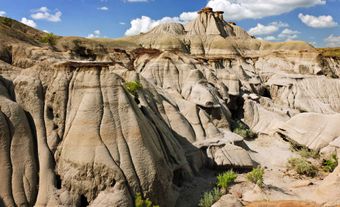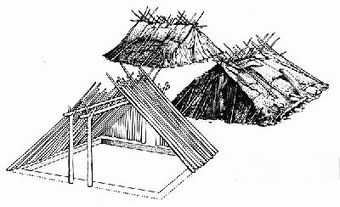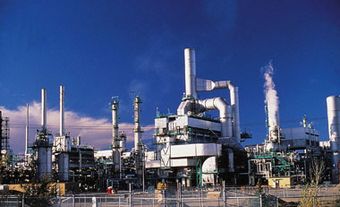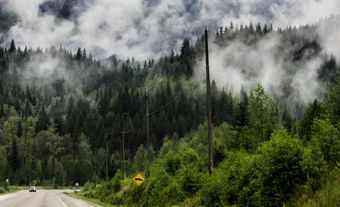Grande Prairie, Alberta, incorporated as a city in 1958, population 64,141 (2021 census), 63,166 (2016 census). The city of Grande Prairie is located 456 km northwest of Edmonton and takes its name from the large prairie that lies to the east, north and west of it. The city is the business and transportation centre of Alberta’s Peace River region.
History
Grande Prairie is located on the traditional territory of the Dane-zaa. The Dane-zaa began trading with the North West Company at Dunvegan on the Peace River in the early 1800s. The earliest recorded reference to the prairie was by trader Samuel Black in 1824. In 1881, a Hudson's Bay Company trading post called Grande Prairie was established by George Kennedy 21 km northwest of the present city.
When 17 townships were surveyed for homesteading in 1909, a land rush soon followed. Many settlers arrived from Edson, via a rough wagon trail that opened in April 1911. By 1912, Grande Prairie included a bank, hotel, post office and land office. With these services in place, Grande Prairie became a district metropolis, leading to its incorporation as a village two years later. In 1916, the village became the terminus of the Edmonton, Dunvegan and British Columbia Railway. After the influx of more settlers, Grande Prairie became a town in 1919.
Economy
Until the 1950s, the economy of Grande Prairie and its hinterland was exclusively agricultural, with some coal and lumber produced for domestic use. The district suffered recession and depopulation during the early 1920s, but expanded later that decade. This expansion was due primarily to the town’s international reputation for grain production. One district farmer in particular, Herman Trelle, helped grow this reputation. Trelle was named World Wheat King at the Chicago international grain exhibition five times.
The Second World War and the building of the Alaska Highway jolted Grande Prairie out of the Great Depression. Oil and natural gas discoveries in the area during the 1950s continued the prosperity. In 1955, Grande Prairie was connected directly to Edmonton by Highway 43. A major Procter & Gamble pulp mill built added to the economy in the 1970s. Although the district suffered a recession in the 1980s, the international demand for oil, natural gas and forest products resulted in a boom economy in the 1990s.
Oil and natural gas industries continue to be major employers of Grande Prairie residents. The Procter & Gamble pulp mill was bought by Weyerhaeuser Company in 1992, and sold to International Papers in 2016. Weyerhaeuser continues to operate a lumbermill in Grande Prairie.
Cityscape
Grande Prairie has much to offer nature lovers, such as Muskoseepi Park in the heart of the city, where many summer festivals are held. Muskoseepi means Bear Creek in the Cree language. Many areas for enjoying the natural environment, such as Saskatoon Island Provincial Park, surround the city.
Cultural Life
Grande Prairie has been served by a newspaper since 1913, and today the Grande Prairie Daily Herald-Tribune provides news to the region. The Grande Prairie area is highly regarded for its cultural achievements and has produced many recognized artists such as Euphemia McNaught, Bob Guest and Peter Von Tiesenhausen. The work of these and other artists is featured in several galleries in the city, such as the Art Gallery of Grande Prairie and the Centre for Creative Arts. The Grande Prairie Museum and South Peace Regional Archives provide professional interpretation of the district's past. The Grande Prairie Regional College, whose central building was designed by Douglas Cardinal, offers a wide range of programs to people throughout northwestern Alberta.

 Share on Facebook
Share on Facebook Share on X
Share on X Share by Email
Share by Email Share on Google Classroom
Share on Google Classroom



